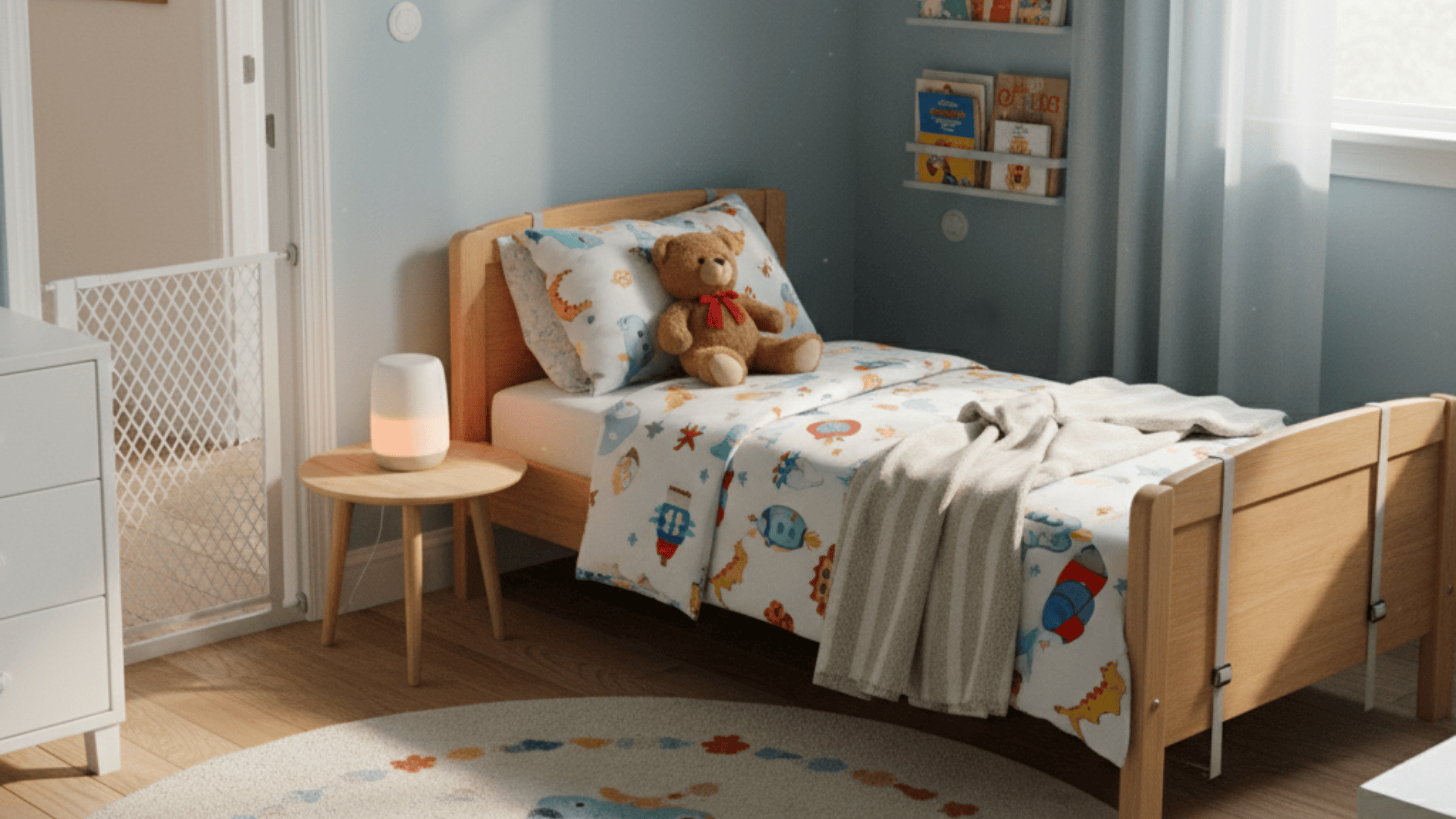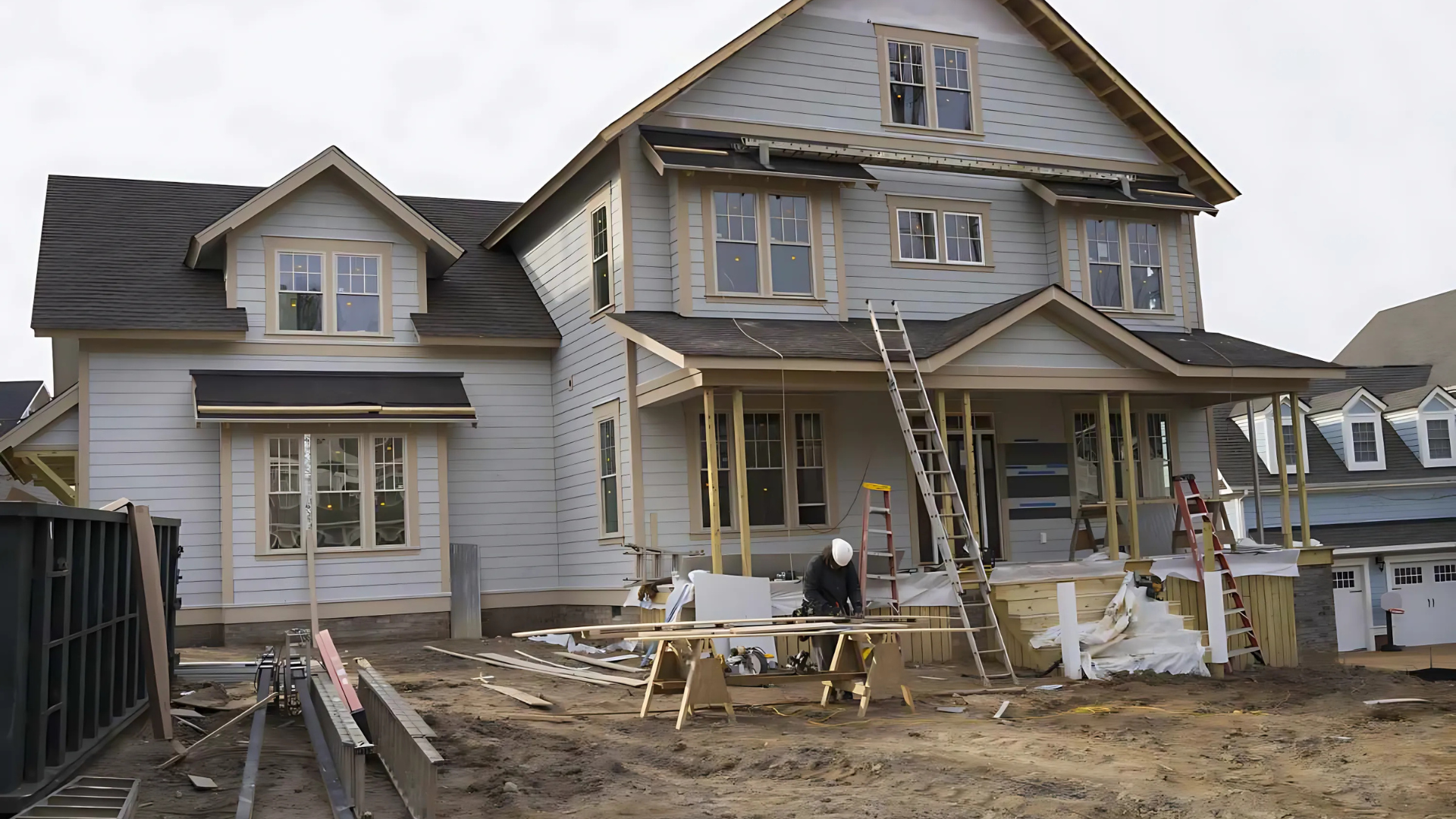Transitioning from a crib to a toddler bed is one of the biggest milestones in early childhood. It signals growth, new independence, and the need for a safe space that matches your child’s stage of development.
Parents often wonder when the right time is and how to make the change without disrupting sleep.
I remember how overwhelming it felt to balance safety, routine, and comfort during this stage, and many families feel the same.
From timing and preparation to troubleshooting challenges, this blog covers everything you need to know for a smooth and confident transition.
When and Why to Transition to a Toddler Bed
Moving from a crib to a toddler bed is a key step for growth, safety, and family comfort. It gives toddlers independence as they climb in and out on their own, which builds confidence and supports daily routines.
A bed designed for their age also lowers the risk of falls once climbing begins, making sleep safer for everyone’s peace of mind.
Most children make this switch between 18 months and 3 years. Signs of readiness include climbing out of the crib, asking for a “big kid” bed, or simply outgrowing the crib.
Parents should also prepare the room by securing furniture, blocking stairs, and removing hazards to keep the new freedom safe.
Steps for Transitioning to a Toddler Bed

The move from crib to bed is a big step for both toddlers and parents. Breaking it into stages makes the process easier and less stressful.
Getting ready in stages makes the move smoother and safer. Each step helps toddlers feel secure while giving them a sense of control:
1. Toddler-Proofing
Anchor heavy furniture to the wall, cover outlets, remove hanging cords, and use safety gates where needed. This keeps the room safe as toddlers find their new freedom.
Recommendation: Use furniture anchors like Safety 1st Furniture Wall Straps. For outlet covers, try Wappa Baby Outlet Plug Covers.
2. Bed Options
Choosing the right bed makes a big difference. Toddler beds are low and familiar, floor beds are simple and safe, and twin beds offer long-term use with side rails for protection.
Recommendation: For toddler beds, check the Delta Children Toddler Bed. For floor bed frames, try the Montessori Floor Bed Frame. For twin beds with rails, see Max & Lily Twin Bed with Guardrails.
3. Involving Your Toddler
Encourage ownership to reduce resistance. Let your child pick their own bedding, talk about the new bed as something positive, and give them playtime in it during the day so it feels familiar.
Recommendation: Fun bedding sets like Paw Patrol Toddler Bedding or Disney Princess Bedding can spark excitement.
4. Comfort Items
Keep favorite blankets, stuffed animals, or white noise machines close. These familiar cues make the new bed feel safe and calming, easing the transition.
Recommendation: A soft plush like a Jellycat Stuffed Animal, or a Hatch Rest White Noise Machine can help toddlers relax.
Preparing Your Toddler Emotionally for the Change
Preparing your child emotionally makes the transition less stressful.
Start by talking about the change in simple, encouraging words. Explain that moving to a new bed means they’re growing up, and frame it as something exciting.
Storybooks about “big kid beds” can also help by showing characters they relate to going through the same experience.
It’s natural for toddlers to feel uncertain or even scared. When that happens, listen to their feelings and let them know it’s okay to be nervous.
Reassure them that they’re safe, and remind them you’ll still be there for comfort.
This balance of excitement and reassurance helps your child feel secure and confident as they adjust to their new bed.
First Night in a Toddler Bed
The first night sets the tone for how your child will adjust. Keeping things consistent and calm helps them feel secure:
- Keep bedtime routine consistent: Follow the same steps you usually do: bath, pajamas, story, or song. Familiar cues remind your toddler it’s still bedtime, just in a new bed.
- Calm goodbye and exit: After tucking them in, say goodnight with a gentle, confident tone. Leave the room without lingering, so they understand it’s time to sleep.
- Managing first attempts at leaving the bed: If the toddler gets up, quietly walk them back without extra talking or play. Stay calm and repeat as many times as needed to set clear boundaries.
This approach helps your toddler understand boundaries while keeping bedtime peaceful.
Special Cases
Some situations need extra care when moving from a crib to a toddler bed.
| Situation | Key Approach | Parent Tips |
|---|---|---|
| From Bed-Sharing | Shift routines into the child’s own room | Gradually reduce your presence until they fall asleep alone |
| Early Transitions (≈18 months) | Prioritize safety and comfort | Use guardrails or floor beds, keep routines short, and offer extra reassurance |
| Later Transitions (3+ years) | Focus on independence and involvement | Let the child pick bedding, frame transition as “growing up,” and explain changes clearly |
| Siblings / Room Sharing | Create structure and personal space | Stagger bedtimes, set quiet-time rules, and define each child’s sleep area |
Common Challenges
Every toddler adjusts differently, and challenges are normal during this stage. Some common issues you may face and ways to handle them:
- Toddler keeps getting out of bed: Stay calm and walk them back each time without making it playful. Avoid long conversations or negotiations. Consistency teaches that bedtime means staying in bed.
- Overnight waking: Respond with brief reassurance and keep interactions short. Check room comfort and keep familiar items nearby. An earlier bedtime can sometimes reduce frequent wakeups.
- Nap time struggles: Follow the same routine as bedtime with stories, quiet time, or white noise. Darken the room and stay consistent to signal it’s still rest time.
- Early rising and wake clocks: Use a wake clock with colors or lights to show when it’s morning. Praise your child when they wait for the right signal to get up.
- Coping with resistance and tears: Stay calm, give short reassurance, and stick to your plan. Avoid over-comforting to prevent new habits from forming. Patience helps toddlers adjust.
Staying patient and consistent is the best way to handle these challenges. With clear routines and calm responses, your toddler will gradually adjust to their new bed.
Expert Insights
Pediatricians and sleep consultants often emphasize when guiding parents through the toddler bed transition:
- Pediatrician guidance: Most recommend transitioning between 18 months and 3 years, depending on safety and developmental readiness. (Source: Cleveland Clinic Health Essentials)
- Sleep consultant tips: Keep routines identical, avoid too much interaction when toddlers leave the bed, and use comfort objects for support. (Source: The Sleep Consultant)
These expert insights give parents clear direction and reassurance. By following these insights, you can make the toddler bed transition smoother and less stressful for the whole family.
Parent Experiences and Advice
Hearing from other parents can make the transition easier to handle. Families often share that while the first nights were tough, staying calm and consistent eventually worked.
Many also highlight the value of involving toddlers in small choices, like bedding or bedtime routines, to ease resistance.
Some real Reddit quotes about crib-to-bed transitions that you might use with attribution:
“With a toddler bed he’d get out and play in his room and get a book and bring it back to bed with him and be perfectly fine … But … new bed he gets out and just cries by the door forever.” – u/Itchy-Version-8977
From r/Parenting’s thread “When did your child switch from the crib to a toddler bed?”:
“My 22 month old is currently in a crib … I wasn’t planning on switching over to a toddler bed until she was like 3 or so.” – u/Lumpy-Lemon-5726
These voices remind you that every child is different. What works for one family may not for another, but consistency and patience are the common threads that lead to success.
Wrapping Up
Learning how to transition to a toddler bed is about balancing safety, comfort, and patience.
Each child will respond differently, but with the right timing, preparation, and consistent routines, the change can feel smooth and supportive for the whole family.
From creating a safe environment to handling setbacks calmly, these steps build independence and better sleep habits.
Expert guidance and real parent experiences also show that small adjustments make a big difference.
Remember, progress may be gradual, but with consistency, your toddler will settle into their new bed with confidence.










